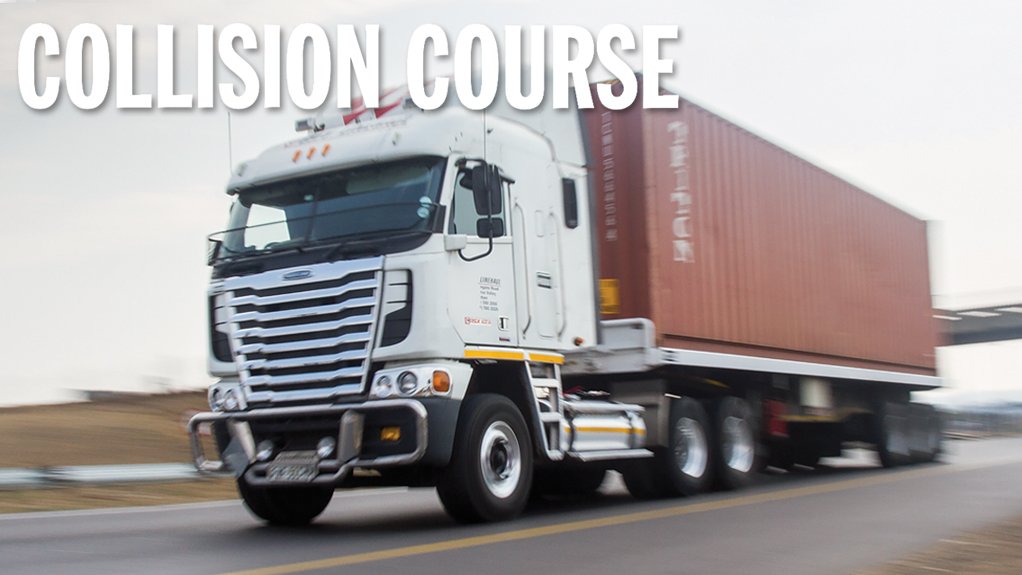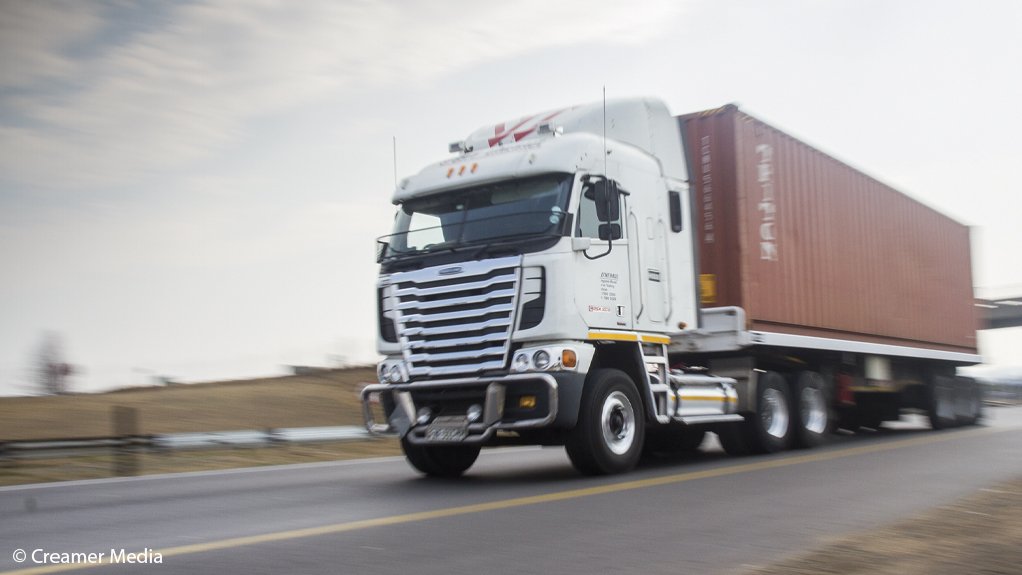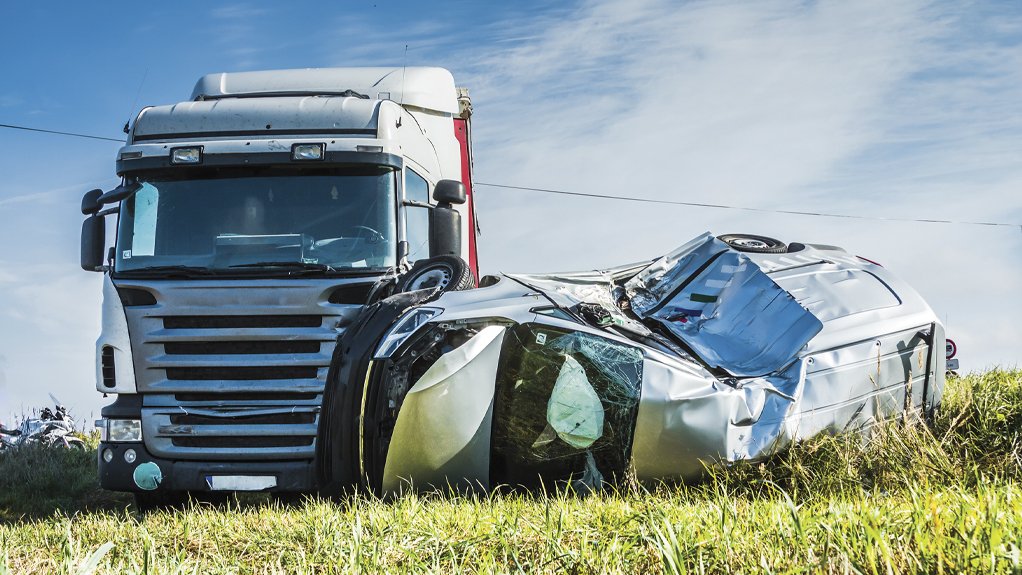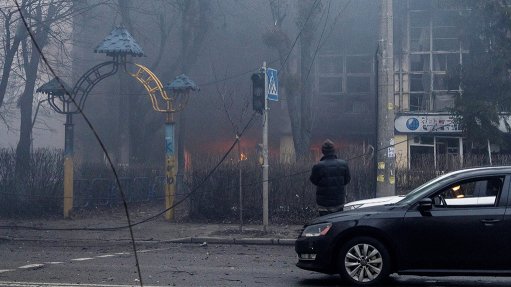Collapse in rail service has increased road freight volumes and risks





There has been an overall increase in vehicular crashes, reflected in a number of simple variables, including a general increase in the number of vehicles on the road, translating into greater chances of collisions.
Photo by Creamer Media
COST OF CRASHES In 2015 – the only year benchmarkable by statistics provided from the Road Traffic Management Corporation – the cost of vehicular crashes to the South African economy totalled more than R140-billion
GAVIN KELLY The truck driving fraternity in South Africa is ageing and that there are not sufficient numbers of younger drivers coming into the industry.
A spate of attention-grabbing road safety incidents involving trucks has sparked debate about the state of land transport in South Africa and brought the safety of trucks and their operators into sharp focus.
Among recent horror crashes involving trucks is the Boksburg gas tanker explosion that claimed 41 lives on December 24, as well as a spate of fatal incidents involving coal trucks around Pongola en route to Richards Bay – including a September 2022 incident in which 20 people died.
The Pongola route used by coal trucks is particularly hazardous, owing to significant trucking congestion, speed limit infringements (trucks over 9 t are prohibited from going faster than 80 km/h) and other road safety violations. The situation is exacerbated by a rapid and significant deterioration in the condition of these roads.
A multivehicle pile-up on Durban’s M41 on March 6 was attributed to a heavy truck losing control and ploughing into 45 vehicles, causing at least 22 injuries and requiring the airlifting of critically injured patients to hospital.
Road Freight Association (RFA) CEO Gavin Kelly tells Engineering News & Mining Weekly that there has been an overall increase in vehicular crashes, reflected in a number of simple variables, including a general increase in the number of vehicles on the road, translating into greater chances of collisions.
He adds that issues with the rail system, including inadequate capacity, have also resulted in logistics companies moving rail-friendly freight to trucks. “The collapse of rail services is a driver in the demand for more road freight – purely because there is no alternative for land freight.”
Statistics South Africa (Stats SA) reports that, as a result of the Covid-19 hard lockdown in 2020, road-going freight transport declined 11.6% year-on-year but increased 6.3% in 2021 and 15.4% in 2022.
Again, Stats SA’s official figures point to rail transport capacity declining from 192-million tonnes in 2020 to 179-million tonnes in 2021 and 155-million tonnes in 2022.
At the same time, road transport (primarily trucking) increased from 624-million tonnes in 2020 to 688-million tonnes in 2021 and rose a significant 22% to reach 839-million tonnes in 2022.
Automobile Association of South Africa (AA) spokesperson Layton Beard tells Engineering News & Mining Weekly that a long-running stagnation regarding any decrease in the frequency of fatal collisions on South African roads is a cause for concern and lays bare insufficient and poorly implemented efforts to reduce the occurrence of serious incidents.
So dire is the state of safety on South African roads that the AA advised motorists to steer clear of traveling as much as possible over the December festive season to ensure their own safety.
He points out that the fatal incident rate – a key metric to measure road safety – averages between 10 000 and 13 000 incidents yearly.
Despite travel restrictions imposed at the height of the Covid-19 pandemic, 8 405 fatal crashes occurred in 2020, killing 9 699 people.
“But, if you go back to 2018 and 2019 [before the pandemic], you look at those numbers in terms of the fatal crashes . . . 10 560 in 2018, and 10 381 in 2019 . . . That gives you an indication that the number of fatal crashes has not decreased,” states Beard.
“If you look at the number of people that have died, in 2021 that number was 12 541. In 2018, there were 12 921 fatalities on the country’s roads, in 2019 there were 12 903,” he points out.
Cost of Crashes
Beard says that the high rate of fatal collisions has a huge impact on South Africa’s economy.
The Road Traffic Management Corporation has only conducted an analysis of the cost of crashes for a single year – 2015.
The total cost of vehicle crashes in South Africa in 2015 came to R142.95-billion, equating to 3.4% of the country’s gross domestic product.
In 2015, 823 431 crashes occurred, of which 11 144 were fatal, 40 117 classified as major and 132 609 as minor. Damage- only crashes totalled 648 560.
The ratio of fatal crashes to non-fatal, but- major crashes was also significant at one fatal crash to every 3.6 major crashes.
“That is why it is significant. That is a significant reason why we should care about crashes. It is something that [the AA] thinks requires a lot more attention.
“The fact of the matter is that, when we look at crashes, [the AA is] concerned that not enough is being done to deal with crashes, both from an infrastructure point of view, from a traffic management law enforcement point of view, and from a judicial point of view,” he says.
Beard says that the South African government has committed to what is known as the 50by30 campaign of the United Nations to reduce by half the number of fatalities in the country by 2030.
However, he says South Africa’s traffic fatality rate has not significantly declined, meaning a low chance of achieving the 50by30 goal.
Kelly notes that general data from the insurance industry points to an increase in reported vehicle collisions, adding that several factors are at play, including deteriorating road conditions, malfunctioning or absent road lighting and poor markings.
Generally, poor driving skills of all classes of drivers and a deterioration in driver behaviour are also a concern, he says.
Among other likely causes of accidents are drivers’ poor or incorrect decision-making when they are faced with a situation, incorrect speeds for situations, poor or incorrect attitudes, criminal activity and poor traffic policing, highlights Kelly.
Specifically, for truck and delivery vehicle drivers, tighter deadlines by logistics businesses may be resulting in drivers increasingly rushing on roads to meet stricter customer demands.
Nonetheless, he notes that what may be perceived to be a rise in major truck crashes or incidents may also just be greater social awareness about such incidents, as more people record incidents on mobile devices and post them to social media. “The power of social media then ratchets up the visibility [of] the occurrence of such events.”
Driver Skills
Kelly advises especially professional drivers to constantly monitor and update their skills.
“Attitudes are just as important – the obeying/adherence to road rules and other requirements,” he says.
Kelly points out that there are numerous training, upskilling, refresher and development programmes run by industry, either through transport companies themselves, or through the Transport Education Training Authority, as well as the RFA.
However, he also notes that the truck driving fraternity in South Africa is ageing and that there are not sufficient numbers of younger drivers coming into the industry.
“There needs to be a more formalised programme to bring younger potential drivers into the industry, and the RFA is busy developing and designing a process to make this a reality,” states Kelly.
Comments
Press Office
Announcements
What's On
Subscribe to improve your user experience...
Option 1 (equivalent of R125 a month):
Receive a weekly copy of Creamer Media's Engineering News & Mining Weekly magazine
(print copy for those in South Africa and e-magazine for those outside of South Africa)
Receive daily email newsletters
Access to full search results
Access archive of magazine back copies
Access to Projects in Progress
Access to ONE Research Report of your choice in PDF format
Option 2 (equivalent of R375 a month):
All benefits from Option 1
PLUS
Access to Creamer Media's Research Channel Africa for ALL Research Reports, in PDF format, on various industrial and mining sectors
including Electricity; Water; Energy Transition; Hydrogen; Roads, Rail and Ports; Coal; Gold; Platinum; Battery Metals; etc.
Already a subscriber?
Forgotten your password?
Receive weekly copy of Creamer Media's Engineering News & Mining Weekly magazine (print copy for those in South Africa and e-magazine for those outside of South Africa)
➕
Recieve daily email newsletters
➕
Access to full search results
➕
Access archive of magazine back copies
➕
Access to Projects in Progress
➕
Access to ONE Research Report of your choice in PDF format
RESEARCH CHANNEL AFRICA
R4500 (equivalent of R375 a month)
SUBSCRIBEAll benefits from Option 1
➕
Access to Creamer Media's Research Channel Africa for ALL Research Reports on various industrial and mining sectors, in PDF format, including on:
Electricity
➕
Water
➕
Energy Transition
➕
Hydrogen
➕
Roads, Rail and Ports
➕
Coal
➕
Gold
➕
Platinum
➕
Battery Metals
➕
etc.
Receive all benefits from Option 1 or Option 2 delivered to numerous people at your company
➕
Multiple User names and Passwords for simultaneous log-ins
➕
Intranet integration access to all in your organisation






















